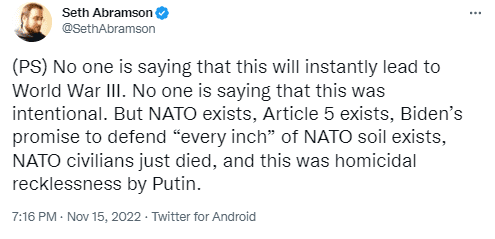Ukrainian President Volodymyr Zelensky delivered an address to New Zealand’s Parliament today and the government has pledged an additional $3 million of humanitarian aid to Ukraine.
Zelensky began with a friendly “kia ora” before saying he would offer New Zealand the opportunity to take the lead in pushing for peace.
“Today, this anti-war coalition has more than 100 countries, those who support the fundamental principle of international law and the UN Charter,” he said.
“Those who do everything possible to hold Russia’s war criminals accountable.”
He said New Zealand was one of the first countries to support Ukraine against Russia’s aggressive invasion and he recognised New Zealand imposed sanctions.
“Let me offer you one more thing, various dictators and aggressors — they always fail to realise that the strength of the free world is not about someone becoming large or becoming full of missiles but in the fact that everyone knows how to unite and act decisively and make a unique contribution to the common cause.
“Perhaps the time has come for your country to make such a unique contribution.”
Peace plan 10 points
He said this could be one of the 10 points in the plan he laid out at the G19 Summit in Indonesia:
- Radiation and nuclear safety
- Food security
- Energy security
- Release of prisoners and deportees
- Implementation of the UN Charter
- Withdrawal of Russian troops and cessation of hostilities
- Justice
- Ecocide and the protection of the environment
- Prevention of escalation
- Confirmation of the end of the war
“Each of these points can remove one or another of Russia’s aggression … I propose to convene a special summit in the coming months.”
He called upon New Zealand to support this formula and to start consolidating the world around the eighth point, environmental security, saying many people did not consider the impact of war on the environment and it was one aspect New Zealand society approached wisely.
“You can’t rebuild destroyed nature, just as you can’t rebuild destroyed lives.”
“There’s no true peace where the consequences of war could be there in the form of poisoned groundwater that may destroy normal lives in several countries. There’s no true peace where ecocide has taken place and its consequences have not been neutralised.”
He said to this day, the world had no strong experience in overcoming the destructive impact of war on the environment.
‘We will win’
“We will liberate our land. We will win this war. I am confident that we will return freedom and security to all Ukrainians wherever they live.”
“Ngā mihi, Slava Ukraini (glory to Ukraine).”
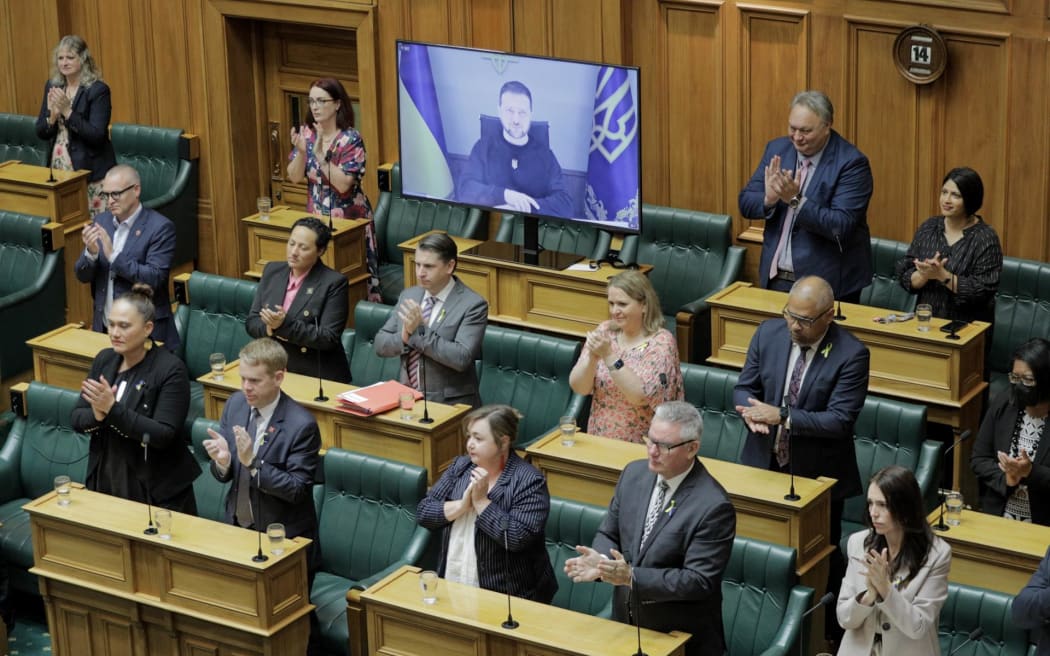
Zelensky is just the second head of a foreign government to address Parliament after Australia’s Julia Gillard in 2011.
The Ukrainian leader’s message to New Zealand comes as the government announced new sanctions on Iranian individuals and an entity involved in the manufacture and supply of drones to Russia.
Those sanctioned today include two Islamic Revolutionary Guard Corps commanders, the Armed Forces General Staff chair Mohammad Hossein Bagheri and drone manufacturer Shahed Aviation Industries.
He has previously spoken to other parliaments, including in the UK, US, European Union, and Australia, appealing for assistance and support in defending Ukraine against Russia’s invasion.
In September, Zelensky addressed world leaders at the United Nations, demanding a special UN tribunal impose “just punishment” on Russia for its invasion of Ukraine, including financial penalties and stripping Moscow of its veto power in the Security Council.
Ardern announces further humanitarian aid
Prime Minister Jacinda Ardern in response thanked him on behalf of New Zealand and said taking the time to speak today was a sacrifice when he was leading his people through a crisis “and one we do not take lightly”.
She hoped he heard loudly and clearly from New Zealand that Ukraine’s was not a forgotten war, and the Parliament on the other side of the world had come together to condemn Russia’s war.
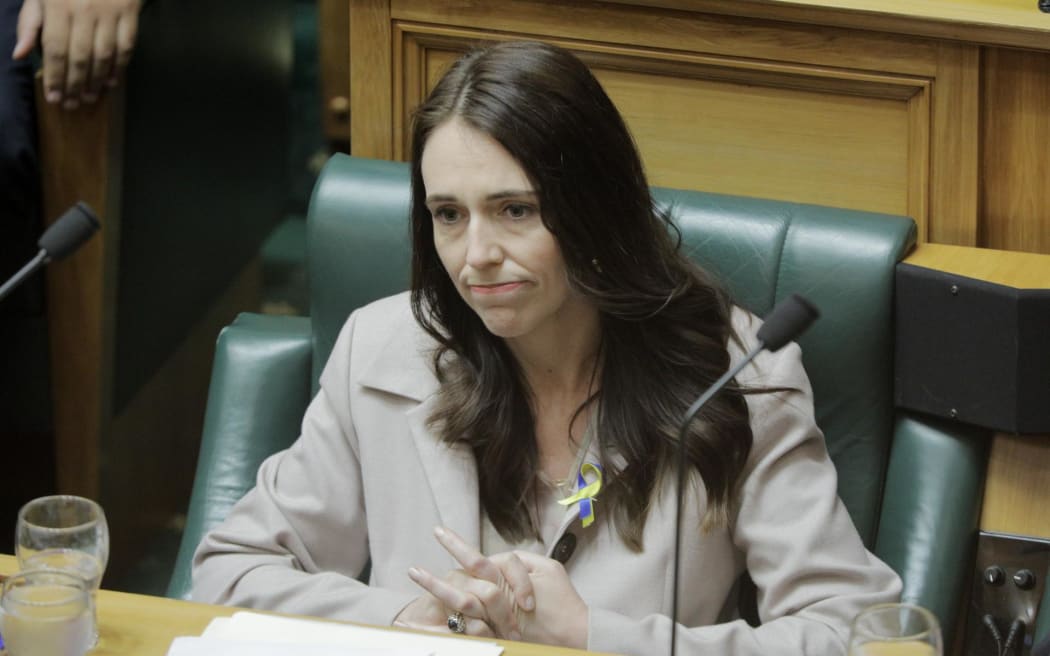
“Our support for Ukraine was not determined by geography, it was not determined by history or by diplomatic ties or relationships — our judgment was a simple one: we asked ourselves the question ‘what if it was us’.”
She also referred to the breach of the international rules-based order and “the misuse of multilateral institutions”.
Running through New Zealand’s commitments to the Ukrainian war effort, she made a further announcement of $3 million of humanitarian aid to Ukraine, through the International Committee of the Red Cross, as the population faces severe hardships over winter.
This would cover items like medical supplies and equipment, power transformers and generators to cope with blackouts, and essential winter items for vulnerable families in Ukraine, like food, water and sanitation and hygiene items.
Ardern acknowledged the plan laid out by Zelensky today, and said the war “must not become a gateway to a more polarised and dangerous world for generations to come”.
Long-term impacts
She acknowledged Zelensky’s urging to counter the long-term impacts of war including with the environment, saying New Zealand had a long history of reconstruction post-conflict.
“That includes remediation such as dealing with unexploded ordinances. We will be with you as you seek peace but we will also be with you as you rebuild.”
She paid a special tribute to Zelensky himself, saying he had been unrelenting in his support of his people and coordinated an international response in support of the rules-based order.
“Kia kaha, kia māia, kia manawanui – slava Ukraini.”
In a statement, Foreign Minister Nanaia Mahuta said the new contribution “comes as the Russian military has stepped up its deliberate targeting of critical national infrastructure, further deepening the severe humanitarian crisis caused by the illegal invasion.”
“Russia’s targeting of energy and other civilian infrastructure is deplorable. As Ukraine faces a harsh winter, Putin’s actions have further disrupted electricity supply, and are harming the health, safety and well-being of already vulnerable communities,” the statement said.
The aid is in addition to almost $8m in humanitarian help already provided, and $48m of military spending including on training deployments, donation of surplus equipment, and procurement of weapons and ammunition.
Other party leaders speak
Opposition National Party leader Christopher Luxon said it was a great honour and tremendous privilege for the Parliament to hear Zelensky’s address, “and we all appreciate the opportunity to say to you ‘kia kaha’, which in our indigenous Māori language means ‘stay strong’.”
He said for those nations that valued democracy, national sovereignty and borders, and uphold the international rule of law the choice was simple.
“New Zealand is one of those countries. Confronted with brutality or diplomacy, autocracy or democracy, darkness or light, there was nothing to discuss except how to individually and collectively to support Ukraine.”
He said the war was a moral battle that posed an existential threat to Ukraine and it could not lose.
“You have been our generation’s Winston Churchill, and since those Russian tanks crossed Ukraine’s border, you have been unwavering in your determination that Ukraine will win this war that it did not want and it did not start.
“Of all the miscalculations Vladimir Putin has made — and there are many — underestimating your resolve and the impact of the strength of your leadership and the words — your words — would have in rallying Ukraine and the world has perhaps been the biggest.”
He said the death of every single Ukrainian was a tragedy, and the greatest regret of the war would be terrible loss of life that left tens of thousands of families bereft.
Luxon also spoke of the need for a reconstruction programme, because “the loss of homes and communities and critical infrastructure is also incalculable”. He said he could not imagine circumstances where New Zealand was not a part of that effort.
Green Party co-leader James Shaw said Russia’s invasion was “as barbaric as it is illegal”.
“It is apparent that there have been and continues to be a multitude of war crimes perpetuated on the Ukrainian people by the Russian forces.
“Were President Putin to be successful, the temporary violence of war would morph into the permanent violence of subjugation — perhaps even genocide.”
He said he applauded the Ukrainians’ efforts to minimise harm to civilians, however he urged that any future calls for military support come before the Parliament — not just the government.
“As a member of the Green Party I have a fundamental commitment to non-violence … the situation in Ukraine remains impossibly difficult in ways that we in Aotearoa New Zealand cannot possibly imagine.”
He said there were people on every continent still suffering from violence and subjugation, and emphasised the importance of universal human rights.
ACT leader David Seymour said he wanted Zelensky and the Ukrainian people “to know that on the other side of the world people care deeply about your struggle against evil”.
“We understand that a dictator attacking our democracy matters to New Zealand, your people are not just fighting for their lives but for all our freedom and democracy and I want you to know that your leadership and courage inspires us.”
He spoke of the New Zealanders who had gone to fight in Ukraine on their own initiative, and the funds raised for the defenders.
“Our donors were particularly pleased to buy luggage tags made from bits of aluminium from downed Russian jets – what great initiative under fire.”
But his comments also took a more political turn, saying the opposition had pushed for the government to do more.
“More sanctions, more refugee places, more lethal aid, and we’ll keep pushing them from this side of our Parliament and if our government changes before you win the New Zealand government will do a lot more than the $3 million you saw today.
“For now, please let me say that you are right and you are fighting against evil for all our freedom, and we back you not only in word but in deed. Slava Ukraini.”
Te Pāti Māori co-leader Debbie Ngarewa-Packer said they supported the kōrero of the Green Party.
“We have little to say today, all the teachings have been learnt of former occasions of war,” she said, quoting Te Whiti-o-Rongomai and Tohu Kākahi, the prophets from Taranaki.
“We have been living together quietly, there will be nothing but mate — but death — for generations to come. We are small in numbers but we are strong. We are fighting not for part of peace but for the whole of peace.
“We today have one role, one role only, and that is to fight for peace.”
She said that as at Parihaka, Te Pāti Māori would continue to fight to uphold peace and make sure there was no suffering the young and coming generations could be ashamed of.
She and fellow co-leader Rawiri Waititi, along with other MPs around the House, concluded with a waiata written in World War II.
This article is republished under a community partnership agreement with RNZ.
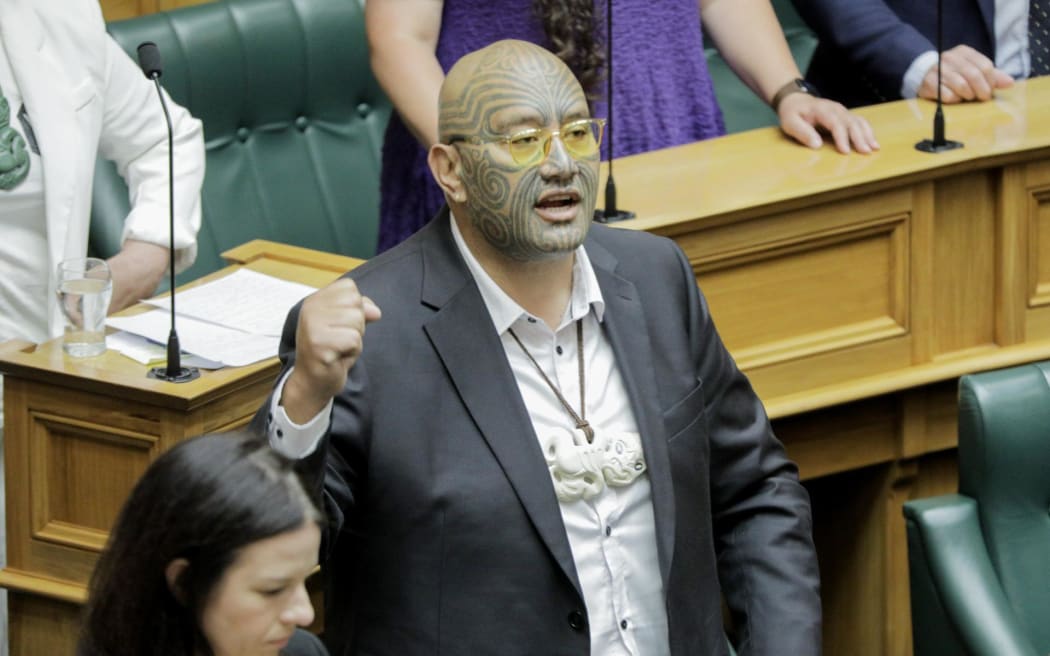
This post was originally published on Asia Pacific Report.
























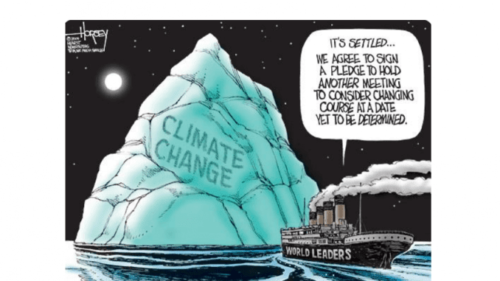






 (@ChattJazz)
(@ChattJazz) 